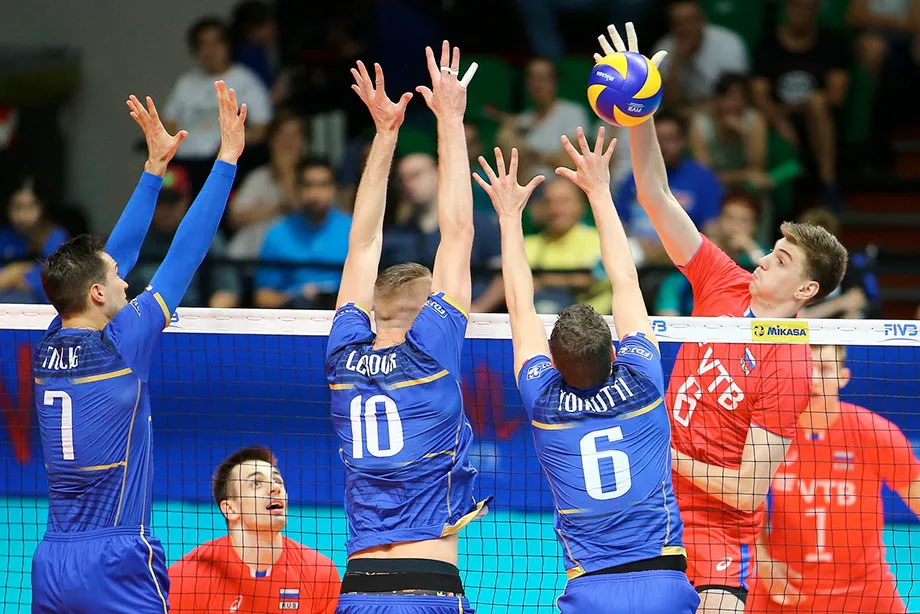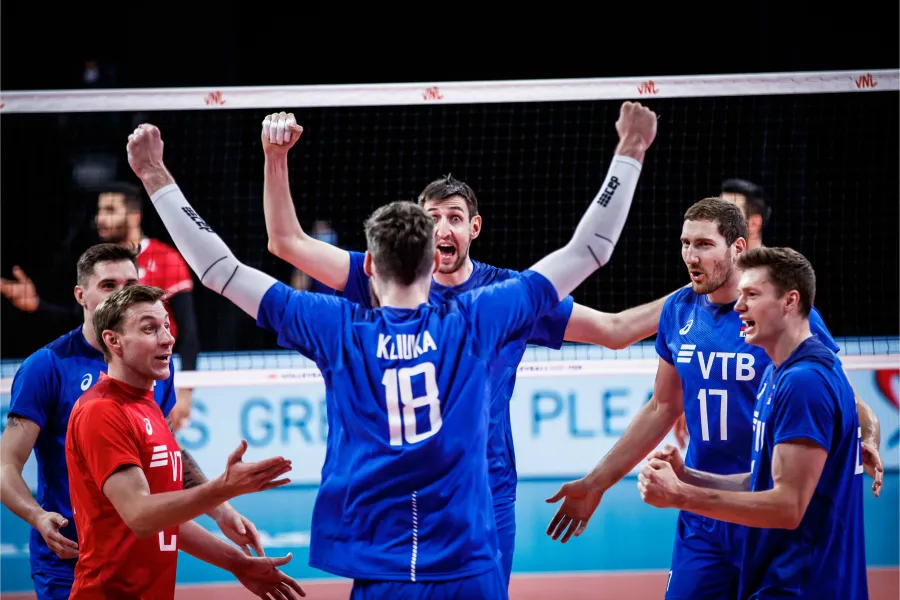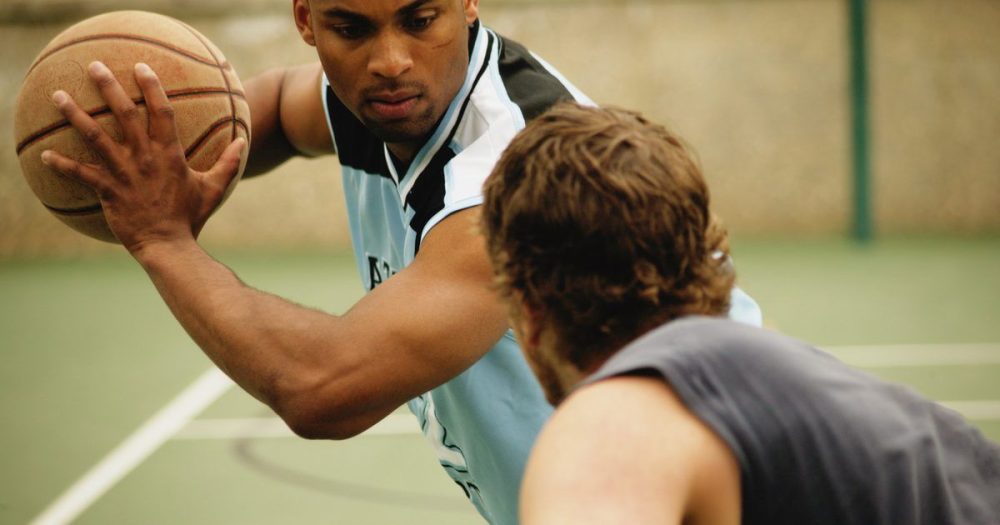It is an interplay of six players, each of whom fulfils a unique role. Understanding the positions in volleyball is key to understanding the overall dynamics of the game. In this article, we will look at each position on the court in detail, from the understated heroes of defence to those who score the final point with powerful attacks. We will find out who is responsible for the team’s success and how, and why the right distribution of responsibilities plays a crucial role.
Basic positions in volleyball
Let’s take a closer look at the processes and tasks of the individual players.

Setter: the brains of the team
The liaison player is the heart and brain of the volleyball team. He decides who and how the ball is passed to and thus sets the pace of the game. The liaison player must immediately assess the situation on the court, make decisions and anticipate the actions of the opponents. His aim is to create the ideal conditions for an attack by connecting the other team members in such a way as to maximise their chances of successfully completing the play.
In critical moments of a game, the athlete often takes centre stage. He finds unconventional solutions and changes the rhythm of the game, confusing the opponent. For example, if the opponent is waiting for a pass to the attacker, the liaison player can suddenly send the ball to the libero, dramatically changing the pace and direction of the attack.
The liaison player in volleyball is a key player who sets the rhythm and pace of the game. Without his clear work, the attack becomes chaotic and the team loses coordination. The interplay between the players in the various positions takes centre stage: the liaison player is the conductor who controls the orchestra in which everyone has a unique role to play.
Libero: the invisible hero of the defence
The libero is the invisible guardian of the team’s defence. His job is to make the impossible possible and to get every ball out, even if it looks like he is going down. The libero is not involved in the attacking actions, but he plays an important role in stabilising the team. He is not just a defender – he inspires the whole team with his confident defensive play.
The speciality of the position is that you always have to be in the baseline and can’t attack. But the athlete is exempt from the usual rotation rules. The functions of the players in volleyball are very different, and it is the libero who has the most specific functions. In difficult moments of the game, when the tension is at its highest, the libero must keep a cool head and coordinate the actions of the other team members so that they can get into the right position to fend off the opponent’s attack.
The libero is also responsible for receiving serves and passing the ball to the liaison player. His skills need to be honed to the point where they become automatic: as soon as the ball comes to him, he immediately assesses the speed, trajectory and angle in order to pass the ball at the right height and with centimetre precision.
Diagonal: the all-rounder who can do everything
The diagonal player is an all-rounder who combines the best qualities of an attacker and defender. He is at the front line and must be ready for both attack and defence. If the opponent launches an attack, the diagonal player must immediately switch to defence mode and be ready to fend off any danger.
The roles of the players in volleyball are different, but this position is characterised by its versatility. The athlete must have a powerful jump to be able to attack from anywhere on the court, as well as excellent coordination and reaction to defend the block and keep the ball in play.
The tactics in volleyball are directly related to the work of the diagonal player. He is often the one who completes attacking combinations when the ball is in a difficult position. A diagonal player must be prepared to attack from difficult positions, make unconventional decisions and hit the opponent with shots from unexpected angles.
Volleyball formation: characteristics and tactics on the court
 A volleyball formation is a carefully thought-out tactic that determines the effectiveness of each attack and defence. Each volleyball player takes up a different position in order to maximise their strengths and cover the team’s weaknesses.
A volleyball formation is a carefully thought-out tactic that determines the effectiveness of each attack and defence. Each volleyball player takes up a different position in order to maximise their strengths and cover the team’s weaknesses.
The outside attacker, for example, is always positioned so that he can quickly reach a favourable spot for a pass. The forwards are on the wings, where they can accelerate and deliver a powerful shot. This scheme makes it possible to distribute the roles in such a way that the weaknesses are minimised and the strengths of each athlete are used.
The importance of changing positions during the game
This is a rule of the rules and an important tactical element. By switching, the team can utilise each member as effectively as possible in different phases of the game. Each time a team scores a point on an opponent’s serve, the players rotate clockwise so that each athlete can be used in both offence and defence.
Advantages of switching positions during the game:
- Even distribution of load among players.
- Development of player versatility.
- Increased unpredictability for the opponent. If players are constantly changing positions, it is more difficult for the opponent to determine who will carry out a particular attack or defence.
- Optimisation of tactical decisions. For example, strong forwards are positioned in the front line at the right time, while defenders are placed where they can most effectively defend against an attack.
- Improved teamwork: Through constant movement and role changes, players learn to understand and feel each other better on the pitch.
The changes ensure a dynamic game and an even distribution of pressure. For example, if a diagonal player is on the back line, he switches to the role of a defender and makes room for the stronger attackers on the front line.
Interaction between players in different positions
When each athlete knows his tasks and what his partner is doing, the team becomes a unified organism. The link-up player must sense his striker, the libero must know exactly where his partner will be in order to receive and pass the ball correctly.
An example of perfect teamwork is the moment when the link player and striker synchronise their actions down to the second: The link-up player makes a pass at a height of three metres and the striker is already leaping and ready to attack. This synchronisation is only achieved through hundreds of hours of training and practising every single movement to the point of automaticity. Only through the coordinated work of all six athletes can a team build an impenetrable defence and a lightning-fast attack.

Positions in volleyball: Conclusions
 Understanding the positions in volleyball is the key to a team’s success. Correct positioning, a clear division of tasks and the ability of each player to maximise their strengths help a team to achieve good results. Next time you watch a game, pay attention to how the volleyball players change positions, interact and coordinate their actions – there is a lot of hard work and skill behind it.
Understanding the positions in volleyball is the key to a team’s success. Correct positioning, a clear division of tasks and the ability of each player to maximise their strengths help a team to achieve good results. Next time you watch a game, pay attention to how the volleyball players change positions, interact and coordinate their actions – there is a lot of hard work and skill behind it.
 en
en  ru
ru  de
de  ar
ar  es
es  hi
hi  fr
fr  nl
nl  it
it  pt
pt  el
el 



